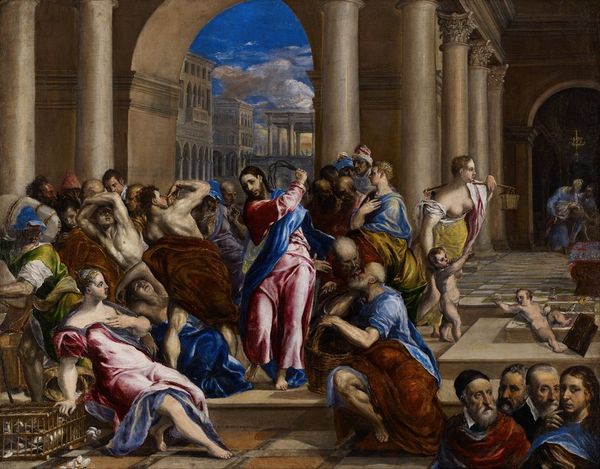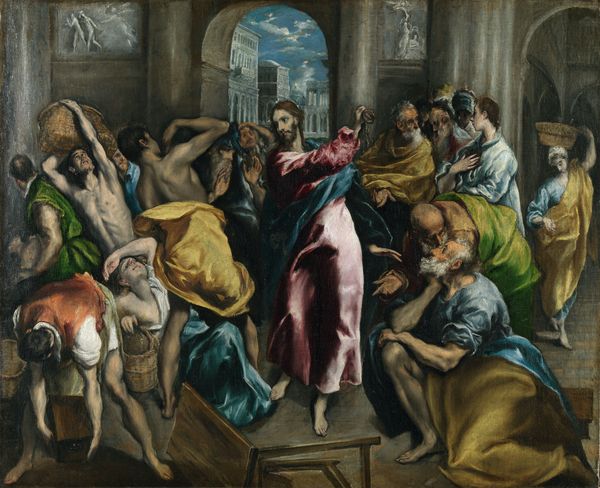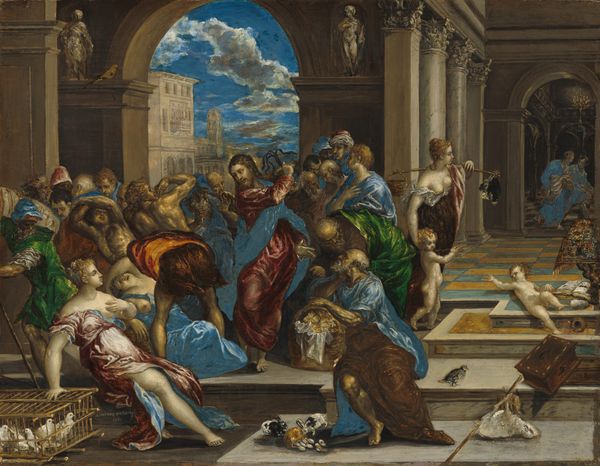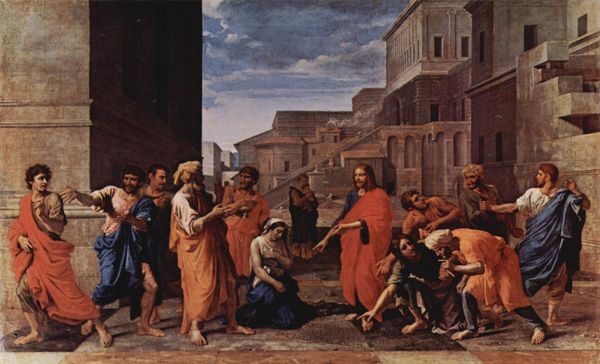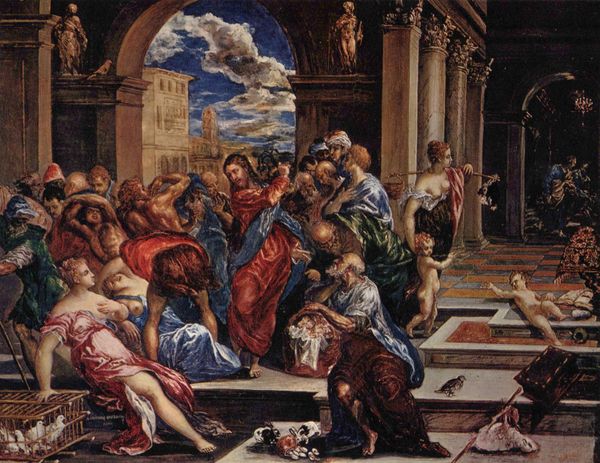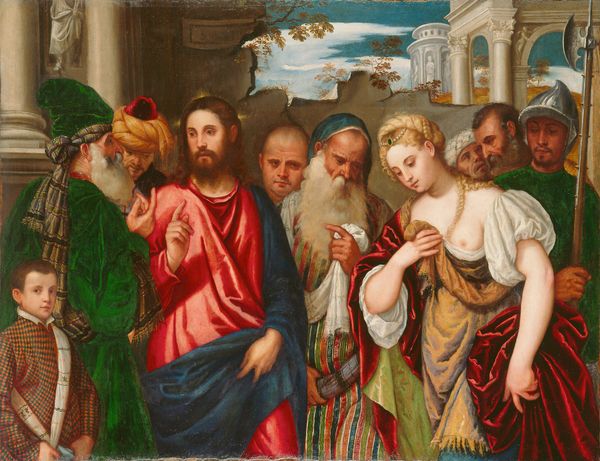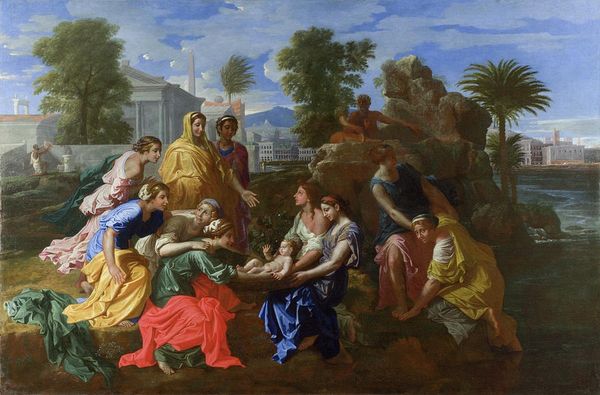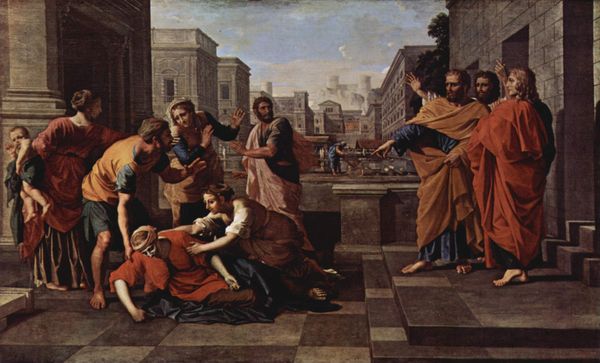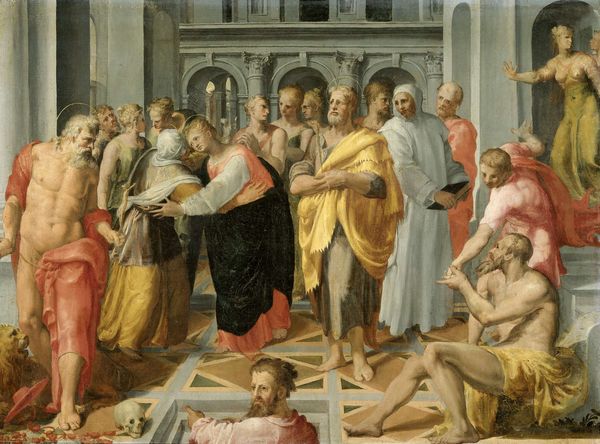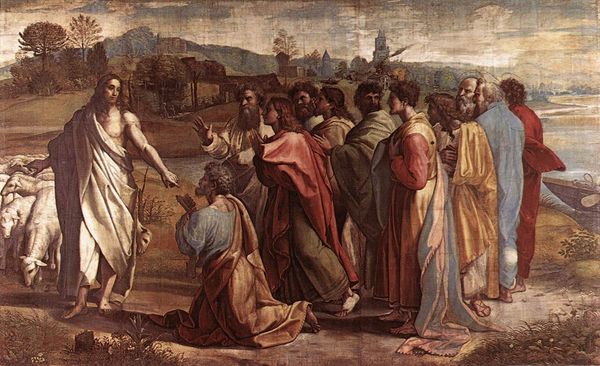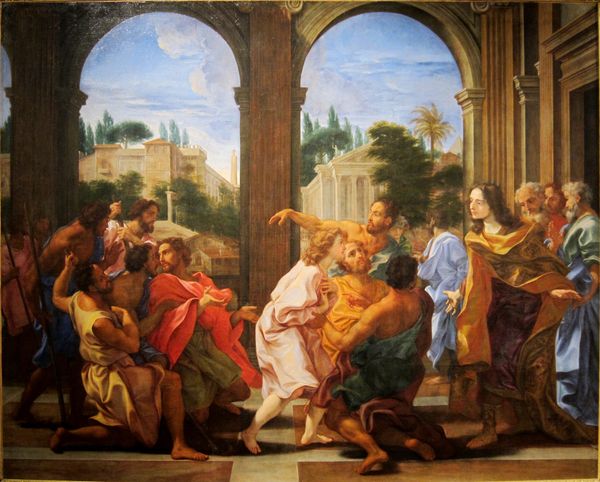
painting, oil-paint
#
painting
#
oil-paint
#
mannerism
#
figuration
#
oil painting
#
history-painting
Copyright: Public Domain: Artvee
Curator: Take a look at this compelling canvas by El Greco, Domenikos Theotokopoulos, dating from about 1570, entitled "Christ Healing the Blind." It’s an oil painting, a masterful example of his Mannerist period. Editor: Immediately striking. The bodies are so elongated, the colours vibrant, almost unreal. It’s a scene of chaos, of crowded humanity—and yet, Christ is a figure of almost ethereal calm at the center. Curator: Exactly. This portrayal captures a key aspect of Mannerism, an intentional departure from Renaissance realism, favouring dramatic and stylized forms. El Greco’s use of this style certainly situates this work within a specific artistic and historical context. Note the Venetian architecture... Editor: Ah, Venice! But there's something almost deliberately anachronistic in how he's represented this miracle. Blindness and sight are, of course, deeply symbolic in religious art. Is it physical healing that’s at play, or a deeper spiritual awakening that he's portraying? Curator: You’re hitting on a crucial point. The Counter-Reformation emphasis on the miraculous gave artworks like this incredible cultural and political potency. The drama would not only inspire faith but also legitimize the Church's authority through visual impact. El Greco worked under the patronage of very influential church institutions. Editor: And within that structure of patronage, one could easily unpack El Greco's specific intention regarding his style. What I see are strong patterns here: folds of fabric, arrangements of limbs... is he suggesting sight has less to do with accurate seeing than recognizing inherent aesthetic order? Curator: It's also worth noticing how the people in the foreground look away. While we see Christ perform a miracle, few of the portrayed onlookers give us visual signals that this divine act is recognized for what it is. We must consider that access to grace itself can often be denied. Editor: Perhaps El Greco means the most profound kind of blindness to be the wilful rejection of beauty and faith. Interesting point. Curator: Yes, that’s a possibility. When approaching such a narrative scene, we see its ability to shape beliefs about humanity, religion and governance. It makes us see art as a vital tool for power dynamics. Editor: A fascinating interplay of symbols and historical moment, creating an image that still resonates with spiritual and emotional depth centuries later. I do like the emotional chaos this creates in me as a viewer. Curator: Indeed. The politics of the image meet a captivating use of visual devices.
Comments
No comments
Be the first to comment and join the conversation on the ultimate creative platform.
